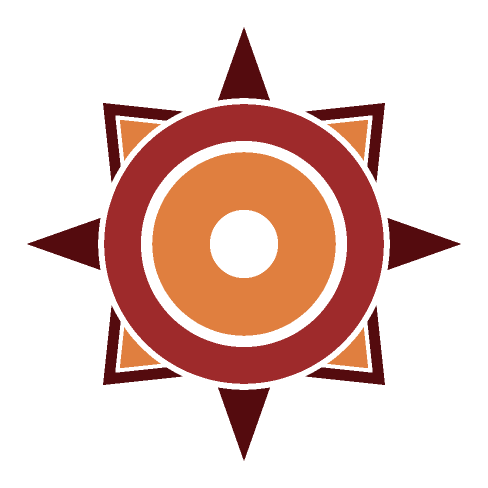Tower Vex
"If someone doesn't take care of that old silo soon, a Vex will move in, and we'll be in real trouble."
Tower Vexes are large predatory dragons that make their nests in tall, isolated places. Abandoned, sapient-built towers are their favorite haunts.
Known to be fiercely territorial, Tower Vexes are a formidible threat to people living within their range. They steal livestock, destroy buildings, and kill anyone that gets just a step too close to their nest.
Basic Information
Anatomy
Vexes are four-legged reptiles. They have thick scales of varying size covering their body from head to toe. Their faces are streamlined and arrow-shaped with a blunt nose and a firm brow.
Vexes are primarily quadrupedal, but can switch to bipedalism if they want to move fast. Their front legs resemble arms more than legs, with three fingers and thumb--all tipped with dagger-like claws.
They have a long flexible neck that allows them to turn their head a full 180 degrees backward. Their tail is long and sturdy, which they use as a counterbalance when climbing and flying. They are powerfully built, with large muscles on their entire body.
Rows of spikes line the Vex’s spine. Spikes also protrude from underneath their jaw and along their brow.
Their wings are wide and slotted for short, low-altitude flights. They don't glide much.
Sexual Dimorphism
Females are much bigger than males. They can sometimes be as much as twice as big as a male of their same age. Females also tend to live longer than males, and have duller coloration.
Male Vexes are more slender and agile than females. Their spikes are longer and sharper, especially around their face. Their wings are larger in proportion to their body size, so they can fly higher and for longer than females can.
Glow Abilities
Tower Vexes are powerful Aura users. Their connection to the largest sun grants them access to blazing hot energy, which they use liberally in their attacks.
Their focus points are on their claws hands and on the inside of their mouth. When enraged, Glow surges to these areas, turning their already-deadly weapons into tools of destruction.
Searing Slash
Their claws crackle with scorching hot energy. Coupled with their razor-sharp claws, Tower Vexes can deliver fatally deep burns. The reddish light emitted from their claws makes them look like molten steel. They can apply the same effect to their teeth and gums, allowing them to sear through flesh with their bite.

Breath of Fire
Tower Vexes can administer death from meters away thanks to the focus point tucked behind their teeth. This special organ focuses enough Glow to release a Glowbeam--a stream of raw, unbridled solar energy. The Vex can only sustain this arc for a moment and has limited control of its aim. However, these weaknesses hardly matter. A Tower Vex’s Glowarcs can reach as far as ten meters from their source. A direct hit is a death sentence. Even if the Vex misses, the resulting fires started by the heat will finish the job.
Forest fires started by Vexes are a common occurrence. The Vex itself is rarely bothered by the flames; their thick scales make them remarkably resistant to heat and burns. The area around their nest is often riddled with the remnants of scorched plants and animals.
When Tower Vexes use Glow, their eyes, inside of their mouth, and spots along their back glow as bright as hot embers. As a threat display, they open their mouths wide to show off the glow.
Genetics and Reproduction
The only time a Vex will seek the company of another Vex is during mating season, which occurs near the beginning of every Dawn year. To find each other, they scream out an ear-piercing mating call that can carry for miles.
Males leave their territory to follow the calls of females. When they find her, they will show off their colorful scales and perform a flight display to earn her approval. If more than one male seeks the affection of the same female, they will try to out-display each other or kill each other. The female picks the winner. Sometimes she just ignores them or tries to eat them.
When a female picks a suitable partner, she allows him to stay in her roost with her. The mated pair stays together for only a few weeks. After that, the female aggressively drives the male away. She will then build a nest out of plant fibers on top of her roost. She lays a clutch of 3-4 eggs, each six inches in diameter. She buries the eggs in the nest to help keep them warm. She also periodically uses Glow to warm them up.

The mother fiercely protects the eggs for their incubation period of 35-50 days. She only leaves the nest when she has to find food for herself. Anything she perceives as a threat to her progeny will quickly meet her teeth, claws, and fiery Glow.
Dietary Needs and Habits
Tower Vexes are carnivorous and eat large mammals and fish. Vexes hunt by taking flight and using their senses of sight and smell to locate prey. They use their sharp teeth and claws to kill their target, then drag its body back to the Vex’s roost, where it is consumed. A good catch can sustain a Vex for as long as two weeks. Nesting females can fast for over a month.
They are known cannibals and will actively hunt their own kind. Males like to raid unprotected nests to consume the eggs or hatchlings. Tower Vexes don’t usually eat their own children--at least not until they’ve grown and left the nest.
Farmyard Defenses
Livestock animals are especially enticing to Tower Vexes. The dragons attack and steal farm animals often. After all, a pig in a paddock is much easier pickings than a free-roaming boar. Nesting females are the most famous for this behavior.
Farmers have had to become increasingly more creative to protect their animals. The three most popular defense methods are wooden stakes, armor, and odeelo birds.
Wooden Stakes
The cheapest and most popular method is to drive pointy log stakes into the ground where the animals graze. The stakes are spaced out enough to not bother the animals, but are too much of an obstacle for a dragon to land in the paddock. This method has moderate effectiveness. It only works with smaller livestock and can be bypassed by especially hungry dragons.
Animal Armor
Equipping the animals with rough, spiky armor helps to prevent them from being carried off by a dragon. While this method is very effective, it has many downsides. It can only be done on animals that are strong enough to carry the extra weight. It also gets quite expensive for larger herds. Many farmers use stakes for the majority of their animals and only put armor on the biggest or most precious.
Odeelo Birds
Recently, a new trick was discovered that can protect livestock just as good as armor while remaining as cheap as stakes. The secret lies in a special little bird native to the Sanori wetlands: the odeelo.
Odeelos can be easily befriended and have a very distinct warning call. When a odeelo makes a farm its home, it will watch over the flock and sound the alarm if it sees a dragon. Farmers train their animals to run to shelter when they hear the call. As long as the bird is observant and the animals are obedient, they will be protected.

Image coming soon!
Behaviour
Tower Vexes will pick a fight with anything and anyone. Every Tower Vex has multiple scars from battles with other Vexes. While Tower Vexes are hostile year round, they are especially dangerous during mating season. Female Tower Vexes should be avoided at all costs when they are protecting eggs. Although males are smaller, they are much more bold during mating season and should not be underestimated.
Tower Vexes are active during the latter half of the day and into the night. They spend the morning sunning themselves on the top of their tower. Their hot Glow makes them much more resilient to cold weather than other reptiles, so they are just as active in the winter as they are in the summer.
Roosting on High Ground

Tower Vexes earned their name by their affinity to make their homes atop abandoned sapient-built towers. They have done this for all of written history. What they did before people arrived is unclear.
Both male and female Vexes roost in tall places, but each prefers a slightly different environment. The much smaller males are more likely to pick more secluded towers. While they still prefer somewhere off the ground, it is not uncommon for them to claim abandoned burrows or caves.
Female Tower Vexes always go for the tallest tower available in order to have an unobstructed view of the surrounding area. Competition for good towers is fierce. Vexes are constantly battling each other for the best roosting spots. If a female Vex can’t claim a tower, she will settle for a cliff side or small low-floating island. As a last resort, she may even find a tall hill and build her own little tower out of sticks on the top.

M: 3.5-4.5 ft at the shoulder
M: 12-14 ft, including tail
Body Tint, Coloring & Marking
As hatchlings, their scales are mottled, earthy tones for better camouflage. As they grow older, their true color slowly fades into their scales. Adult Tower Vexes look very different depending on sex.
Female Tower Vexes can be muted red, orange, or rarely bronze. Their head and spikes are black. They may have faint spotting or striping along their backs and legs. Their eyes are strikingly bright red.
Male Tower Vexes can be ruby red, sunset orange, yellow-orange, or rarely gold. Their head is rich black. Their spikes are black with an ombre of red or orange at the tips. Their belly scales are vibrant yellow. The males' scales get a glossy sheen during mating season.

Sensory Capabilities
The Tower Vex's most powerful senses are sight and smell. It can "taste" the air by flicking out its long tongue. It uses its smell to track food sources, and its sight to watch over its territory. They have average night vision.
Byproducts
The fire-resistant scales of a Tower Vex are extremely valuable. As useful as they are beautiful, a good quality skin can sell for tens of thousands. The Vex's celestial core is worth even more, as it has one of the highest Aura capacities of any solar core across either continent.
The rest of the Vex, while not as flashy as the core or the scales, is far from worthless. Its meat is tough, but can make a fine jerky. Its bones can be used for many tools. Its spikes, teeth, and claws make great adornments for jewelry and clothing. Even its tongue can be boiled into an elixir for Luminous health.










a very nice article! i love the odeelo birds, and the byproducts are really interesting!
Thank you so much! <3 <3